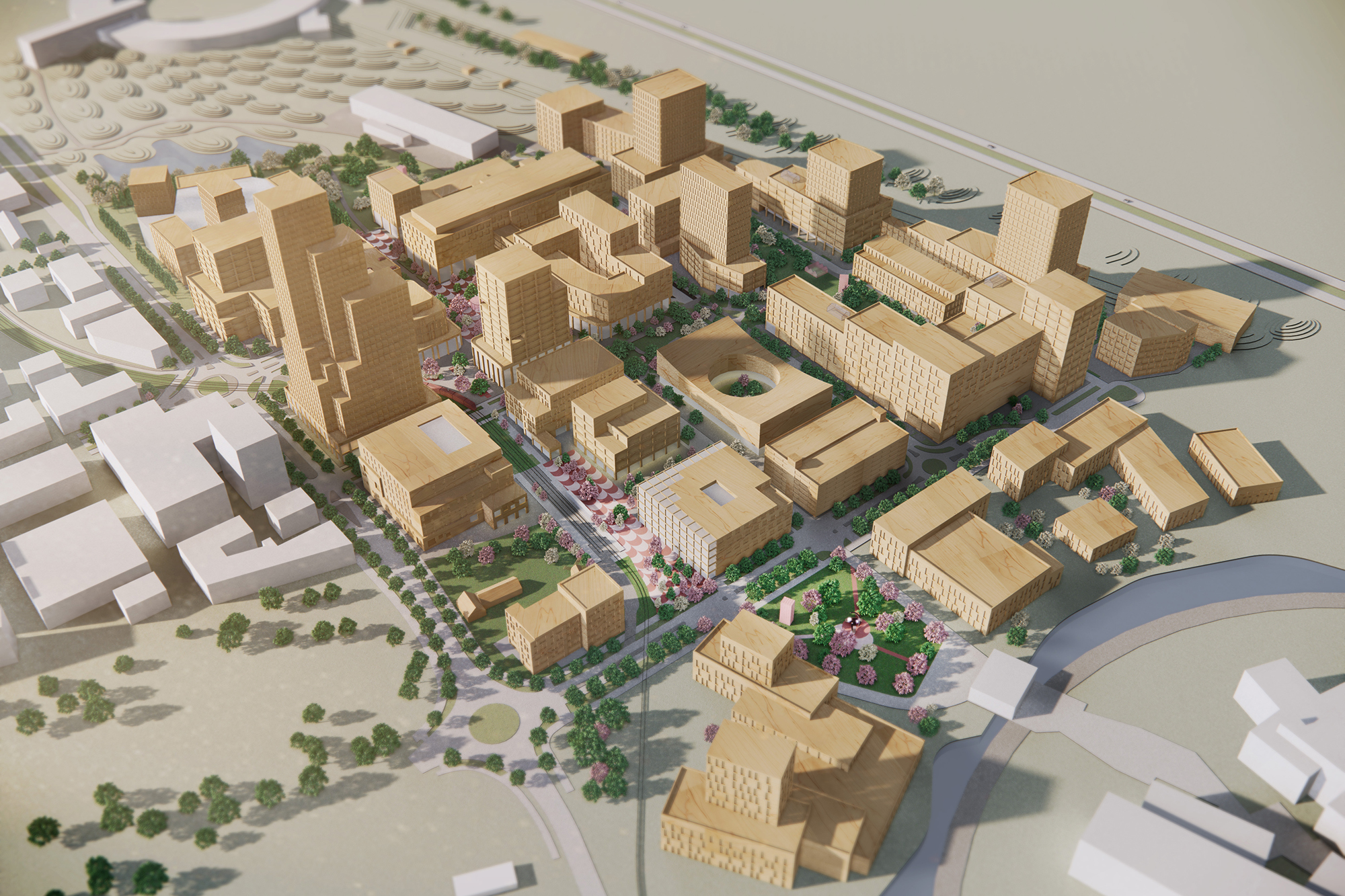2024-08-26
Humanistic high tech when Lund Science Village is designed
Science Village in Lund is to become an international hotspot and a creative research center that can compete with similar places in the world. The architectural firm FOJAB was commissioned to take a holistic approach to the design. The planning program has now been sent for consultation.
Central Science Village is located between the two research facilities MAX IV and ESS in Brunnshög in northwest Lund. The 22-hectare area is being developed jointly by Lund University, Lund Municipality and Region Skåne through the company Science Village AB.
The ambition is to maximize the benefits of both facilities by creating a creative environment for knowledge exchange between research, industry and academia. The site should also feel inviting and inspiring for the public to visit and help make research accessible.
An integrated approach to urban development
The area is under development and FOJAB's mission has been to take a comprehensive urban design approach for future phases, based on how the site's core values can take shape in the built environment.
- "We are looking forward to building a place where innovation and research into new materials can flourish. Science Village will be an attractive campus environment with large parks and squares as well as elements of entertainment and culture, shops, cafes and restaurants side by side with world-leading education and research," says Christian Lindfors, CEO of Science Village Scandinavia AB.
A high density is proposed for the area, making good use of its unique location and the agricultural land it occupies. The architecture should signal that research at the cutting edge is being conducted here, but without it feeling cold and closed. Humanistic high tech are the words used by the responsible architect Karin Fagerberg at FOJAB.
Attractive rooms
Public spaces will play a major role in the identity of the area. Great emphasis is therefore placed on creating attractive places. The footprint of the building volumes has been reduced in favor of urban spaces with different qualities. In order to accommodate the same content, buildings are proposed to be taller in strategic locations. As a continuation of the line of tall buildings at the tram stops through Lund, a building with up to 35 floors is planned at the terminus, Lund ESS, in Science Village.
The height of the buildings is lower along a central pedestrian route and important recreational areas. This is also where a large part of the area's outward-looking functions are concentrated. The core value process has resulted in a number of principles for future stakeholders to follow, for example that the ground floors should contain "science lounges". What they will contain is open to interpretation, but the concept implies openness and sharing of activities in some form.
- This openness is not entirely self-evident in the research world, where research results may need to be kept secret. The buildings are therefore often closed and shielded from view, but in the Science Village, that closeness is lifted up a floor," says Karin Fagerberg.
Innovative sustainability solutions
The Science Village is based on sustainability from different perspectives, which is reflected in the design. Sustainable mobility is prioritized. The outdoor environments are designed to cope with a more extreme climate with increased rainfall and the need for shade. A prioritization has already been developed for how trees should be planted so that they provide the greatest benefit in terms of climate and well-being. Innovative area-wide system solutions contribute to energy efficiency, local energy production and circular use of resources. For example, residual heat from ESS and MAX IV will heat the buildings in the district heating network. The vast majority of the buildings will achieve at least Gold environmental class.
